As an Amazon Associate I earn from qualifying purchases.
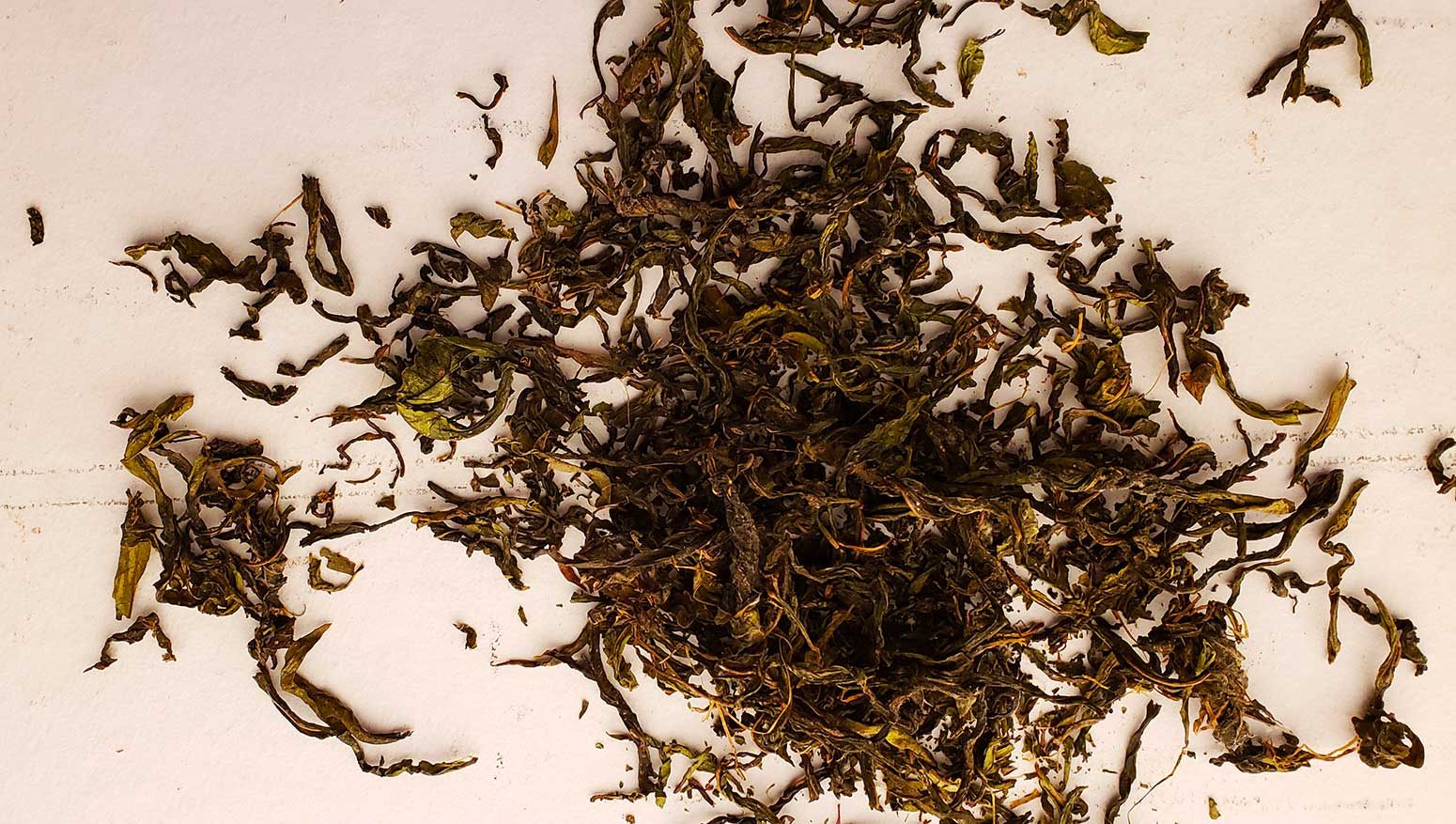
I can’t remember where I first heard about fireweed tea, but once I did, I knew I had to make it.
Unlike every other herbal tea I’ve ever heard of, fireweed tea is not just dried leaves in hot water: The leaves are fermented, just like those in black tea. The result is a tea you can make at home that tastes very much like the black tea you buy in the store — only no caffeine.
First, what the heck is fireweed? Chamaenerion angustifolium lives across the Northern Hemisphere, and down into the Lower 48 in mountainous regions; it’s very common in the High Sierra here in NorCal. You can find fireweed in most American states and all of Canada, as you can see from this map.
It likes to colonize places that have burned or have been otherwise disturbed, but fireweed is really so very common that if you live in a cool climate, it shouldn’t be hard to find. Look for the pretty pink flowers.
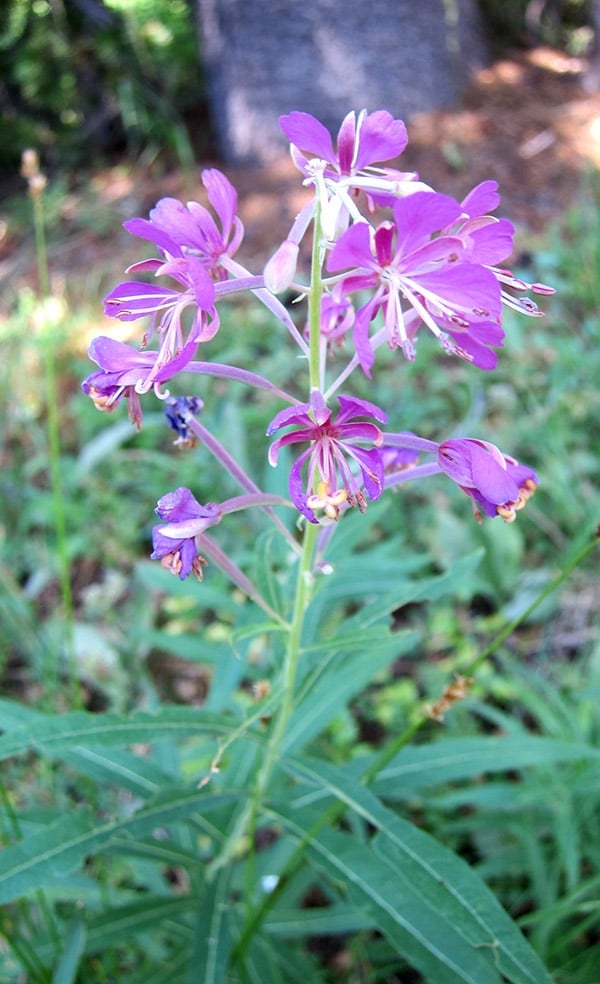
Fireweed tea has a long history in Russia, where it’s called Koporye tea. Apparently there was a thriving fireweed tea industry in the Pacific Northwest when the Russians occupied it.
You make fireweed tea by stripping the leaves off the stalks, bruising them in some way, letting them oxidize and ferment, then drying and storing them. This is more or less the same way traditional tea is made.
When you bruise the leaves you need to exert some force. After a while, your hands should look like this:
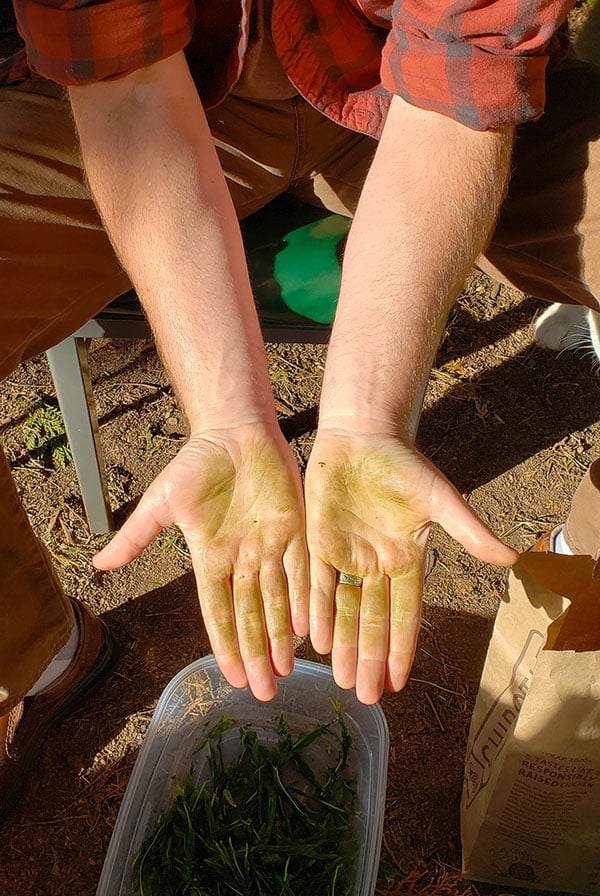
Here is a video showing you how to do it.
Once you’re all done, the result tastes very much like black tea, only with a fruity, almost pineapple-like aroma… and no caffeine. I like to drink it after my morning coffee on cold days, with a little honey and maybe a splash of cream.
Here’s how I make it.
Fireweed Tea
Ingredients
- 2 pounds fresh fireweed leaves
Instructions
- Use scissors to cut fireweed stalks just below the last pretty looking leaf; fireweed leaves can get scraggly lower on the plant. Strip the leaves from the stalks and set in a bowl.
- Grab a few leaves and using your palms, roll them vigorously together. You want to roll them into a fairly tight mass, bruising the leaves. Set the bruised rolls into a container that has a lid.
- When you have all the fireweed rolled and bruised, put the lid on the container and set out of direct sunlight at room temperature. Let this ferment for 2 to 3 days, moving the leaves around once or twice a day. You want an environment that's humid so the leaves don't dry out but not so humid they all mold. You will just need to watch it. Discard any moldy leaves.
- After the leaves are a very dark green, almost black -- two to three days -- lay them out in the sun to dry if you live in a hot, dry place. Other ways to stop the fermentation are to steam the leaves for about 5 minutes or roasting in a 350F oven for 20 minutes. I like the sun-dried and steamed methods. If you do steam, you'll then need to dehydrate the leaves anyway, so a steam bath followed by a hot period of sun drying makes the best tea.
- Store your tea in a Mason jar in a cool, dry place. I like to add a silica packet in there to prevent molding. The tea will keep up to 2 years this way.
- Brew as you would any normal loose leaf black tea.
Notes
Nutrition information is automatically calculated, so should only be used as an approximation.
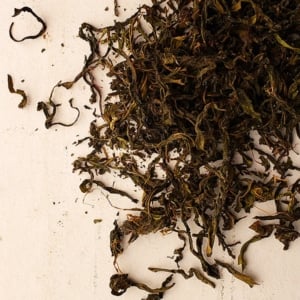

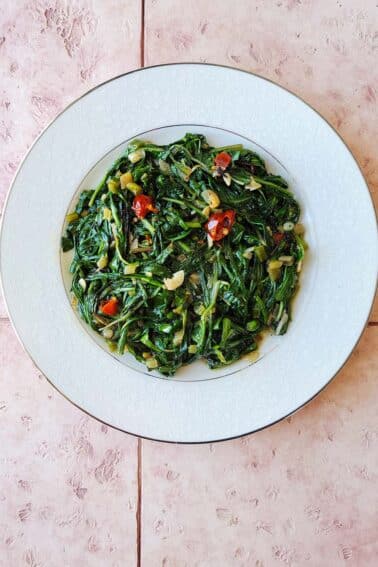

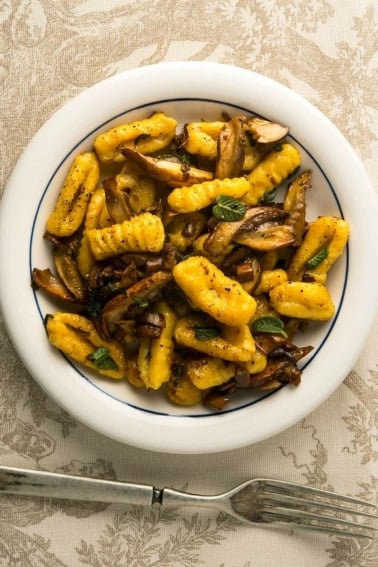
Hi
So I tried to make this and followed your instructions. But even after over a week the leaves didn’t get really dark. There was no mold, so I steamed and dehydrated it. Made tea and it barely colored the water. So I made it again and used two tablespoons for a cup. A bit darker but still blah. Added honey and the taste isn’t bad – just really weak.
What did I miss?
Gabriele: My guess is you didn’t bruise the leaves enough initially. When I make this, I roll a few leaves between my hands vigorously until the leaves are well bruised. That seems to cause the fermentation.
Hello! Could your explain the steam a bit? I have two batches going and am in full experiment mode. I would like to try this method but don’t want to end up blanching the tea.
Also, if in a bind I can find this in the local Russian deli markets (I am in Portland Oregon).
Kara: Sure. You fluff the leaves up a bit, then put a steamer tray in a pot with a little water. Get that water boiling, then put the leaves in the steamer tray. Cover the pot and steam on high for 5 minutes. Remove, spread out and dry.
Hi!!!
I loved your recipe!!I was wondering if you know why fireweed is fermented? I mean, I could use the leaves just drying them up and using them as a componentes herbal tea, but…why is it that it is fermented?It is because it gives more properties or nutrients or something else than the “regular”-dry-fireweed-leaves tea?
Andrea: I do know that regular black tea is fermented, too, so it seems to be a mimic of that. The aroma is radically different in the fermented tea vs. that which has been simply dried.
Would using a dehydrator be suitable for drying the leaves after fermentation?
Kayla: Yes. Put it on its coolest setting.
Is this your only recommendation for using fireweed? I’m hoping to discover a way to make it tasty as a vegetable, as some sources claim the whole plant is edible. I tried some blanched shoots and there is a harshness after chewing for a moment which has me doubting whether it is worth doing more than making tea (which will be a fun adventure later in the season when the plants are fully grown)
Hi, so I had my leaves fermenting in a large mason jar but I think they could have been exposed to direct sunlight and the condensation kind of ceased after a day. I left them as was waiting for them to turn darker, but they didn’t and this morning when I opened the jar, they were a bit dry. They definitely had a lovely slightly sour fermented smell so I just put them on trays into the oven on low to fully dry. Do you think it will still be good despite not fermenting for the proper amount of time, and remaining pretty green?? Thanks for your time!
Cindy: Sure, they will still be good, just not as nice as when they are fully fermented.
Thanks!
Hi Hank,
I used your recipe to successfully make my first batch of fireweed tea! For my second batch, I fermented the leaves for 3 days but forgot to steam the leaves before putting them in the dehydrator. Is there anyway to save the tea at this point… can I steam them after they have been dehydrated then dehydrate again. Or perhaps toss them into the compost- ha. Thank you.
What does it mean to “break gluten” if fireweed powder is mixed with wheat flour.
Kitti: Gluten forms strands when dough is worked. This is what allows bread to rise. Adding any gluten-free powder will interfere with those strands, shortening them and preventing a bread from rising properly.
thank you
i find when making the tea,leting them sit for twenty four hours to wilt,helps to make them roll easyer……
Julie: Good tip, thanks!
Some good things come from procrastination. When I decuded to go for this recipe, I waited until the leaves turned yellow and red. This late harvest seems to bring out a more complex aroma and flavor than described here. Difficult to describe but very satisfying. Also, after fermenting and drying, curing over the course of a winter or more also adds real charachter to the tea. This year, I’ll be doing an early harvest and a late harvest, tasting the difference. Wonderful how these plants stay in bloom for so long!
CJ: That’s great information, thank you!
Hi, where can we buy this type of tea in bulk or tea bags? Wholefoods?
Sandra: You can’t. You have to make it yourself.
Not true. It can be bought here: https://www.russianfoodusa.com/Fireweed-100-Ivan-Tea/
Fireweed tea is associated with loads of health benefits too, especially urinary tract, kidney etc and even (yes, there is a peer reviewed article on this) prostate cancer.
So plastic ok for the fermenting container?
Kelly: Yes.
Hi Hank, have you ever used a dehydrator for the drying part?
Amy: Yes, once it has fermented. Works well.
You can find a really nice slow-fermented biodynamic fireweed leaf tea in this store: https://elocaltea.com/collections/frontpage/products/organic-fireweed-tea
Cheers!
Here on the east coast we have yaupon which is another forgotten native tea. However, yaupon does have caffeine.
Thanks for this, Hank.
By coincidence, a colleague and I were chatting in the coffee room and he mentioned harvesting his own tea, both here in Canada as well as in his native Russia. He sent me a link to Wikipedia (see Website link below) that showed me the plant and I immediately made the connection to this article.
It does taste remarkably like regular black tea, only somewhat weaker. It has an aftertaste that puts me in mind of green tea. It’s good enough that I’m going to harvest my own next year.
https://en.wikipedia.org/wiki/Chamaenerion
Hi, Hank. Thanks for this tutorial. What’s the best time of year to harvest leaves for tea? Before flowering? Or while in flower?
Amy: I like making it when the last of the magenta flowers are blooming. You can do it slightly later, too. You want fully grown leaves.
Hi Hank, I’ve been making this type of tea for a few years now and I am now considering powdering some to use as a flour additive or smoothie ingredient as I have large supply. Any thoughts on using the dried fermented fireweed leaves as a powder?
Gary: Not really, but it could be good, or not. Only one way to find out! It will break gluten if mixed with wheat flour. I would do something with it that lets that cool aroma shine.
Hello Hank,
Thanks for the great article on fireweed tea. I want to share some ecological harvesting knowledge about fireweed. The Slavic people who introduced this tea to me don’t cut the stalks. Starting a few leaves below the flowering head, they strip the leaves from the stalk downward. This method keeps the plant alive for the other wildlife who depend on the flowering heads for sustenance, especially humming birds and bees.
Dave: That’s funny, because that’s what I’ve been doing. Easier than pulling up the plant.
Great recipe and information Hank. I’ve been toying with the idea of attaching organza bags of fireweed tea to jars of fireweed ‘honey’ or jelly for Christmas gifts for years. Everyone always seems blown away with the fireweed, currant, buckberry, garlic/onion, elderberry, rose hips, etc.. With all the Alaska shows these days people go crazy for it. Always surprises them to learn we have it here in California. Does seem to work in our favor though. Almost no gathering pressure from other people. Even though most grow by the roadside.
This tea sounds delicious! Would love to try some. Maybe you could send a small packet through the mail to me? Then when I have it in the morning I will think especially of thee! Thanks for the video as it helps to show how to get the leaves ready for fermenting.
Love,
Mum
Look up Ian Chai on youtube. There are some great videos on making this wonderful fireweed( Ivan Chai) tea. Very healthy for your immune system!